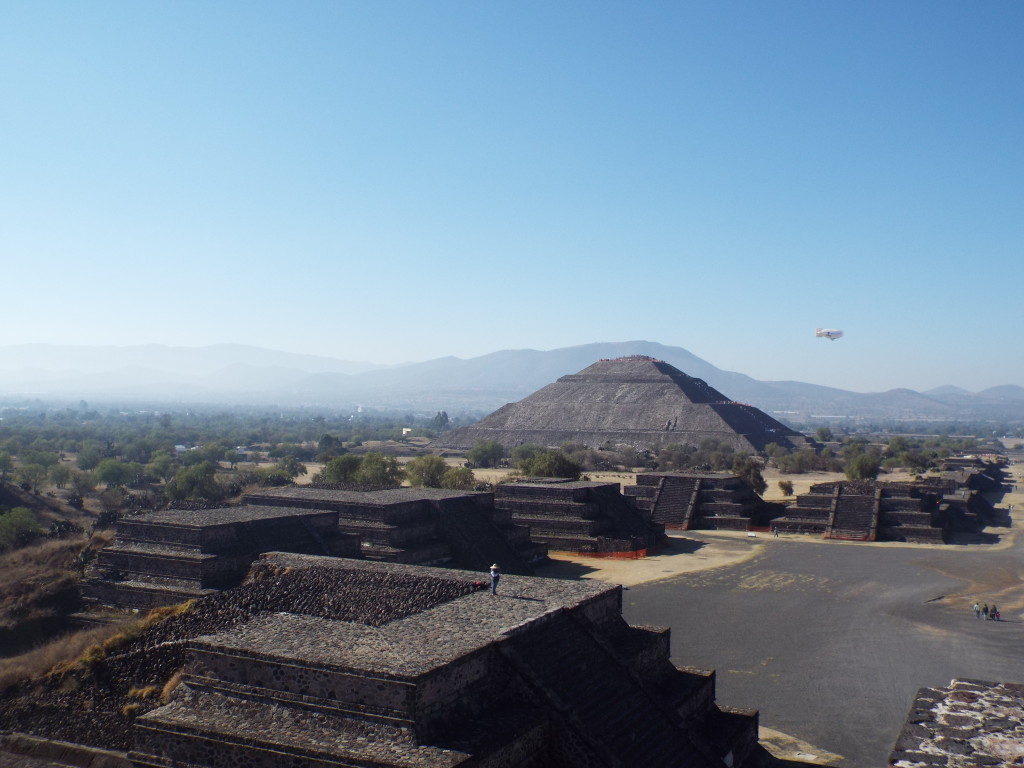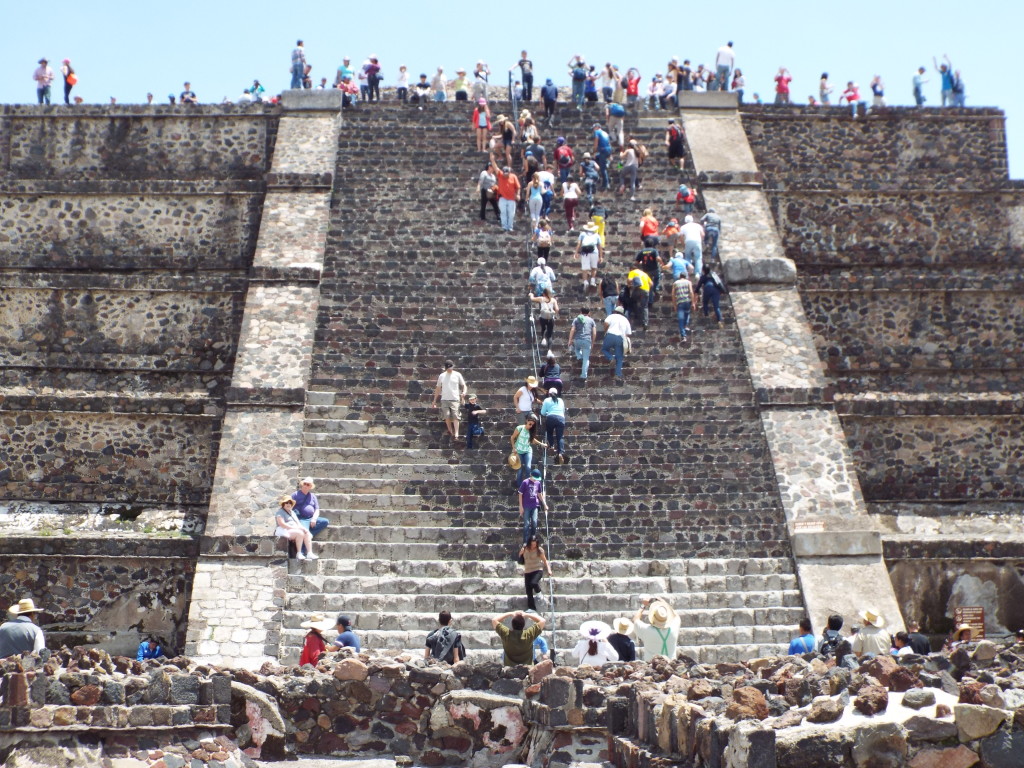The more I learn about Teotihuacan, the more I find myself impressed by these incredible ruins only 45 minutes outside Mexico City.
For several centuries (100AD to 750AD approximately) Teotihuacan is believed to have been Mesoamerica’s economic powerhouse. The city’s population was between 150,000 and 200,000 strong, rivaling ancient Rome and Beijing as the largest urban population of its time. The city’s master plan was meticulously created by someone, with all north-south walls and streets aligning as exactly 15 degrees/25 minutes east of due north. Not a whole lot is known about the inhabitants of this ancient metropolis — when the Aztecs “discovered” these structures a few centuries after the city’s destruction, they were long-since abandoned by their proprietors.
What is believed is that the city was controlled the very lucrative and important green obsidian trade, with most of the obsidian mines within a few hundred miles of its limits. You can find Teotihuacan obsidian blades throughout Mesoamerica where they were used for both sacred and profane purposes. Most archaeologists believe that the city was tightly controlled by its elite classes, but also relatively wealthy and that the wealth was spread among residents in a manner which they kept them content within the hierarchy. It’s a strong possibility that a combination of human-caused environmental degradation and growing economic inequality among locals was the reason that sometime between 500 AD and 750AD the city was burned by its residents — with a specific focus on temples and the administrative buildings of the ruling class.
Whatever the reason, the Aztecs found an empty city when they arrived to the Valley of Mexico and were so stunned by its architecture that they named the city Teotihuacan, or the City of the Gods, convinced as they were that this was the place where gods were born and had created men.
The site’s most famous structures are the Pyramid of the Sun and the Pyramid of the Moon and I am continually awestruck at the size of the world’s third-largest pyramid. I was lucky enough to be in Mexico City back when you could climb to the top of the Pyramid of the Sun. The preservationist in me was brought to edge of tears watching hundreds of people clamber up those 243 stone steps, but the sensualist in me loved the energy of the ancient stones under my fingertips. Unfortunately, you can no longer climb the pyramid, surely a loss for visitors but maybe a win for the future of the site.
A favorite day trip of Frida Kahlo, Teotihuacan currently boasts thousands of visitors a year who come to see this mythical place. I went for the Spring Equinox one spring, a yearly ritual where pilgrims and practitioners of a wide variety of religions come to be “recharged” by the first rays of Spring. Visitors come dressed in white and many wear red scarves or headbands in a nod to their Indigenous roots (the way of the ancestors one local farmer told me is described as the camino rojo or red path).
Groups of local farmers and community members gather to dance, offer prayers, and receive blessings from the ancient gods of Spring. On this day the site opens early (7am as opposed to their normal opening at 9am) and buses drop off visitors at Puerta 2, which leads directly to the Pyramid of the Sun.
 For regular visits, Puerta 1 will take you past a collection of gift shops and bathrooms and you can walk towards the site from the crown of its main north-south avenue, the Avenue of the Dead. Puerta 4 is the entrance closest to the Pyramid of the Moon. Buses from Terminal Norte in Mexico City start running at 6am everyday and leave about every 15 minutes to the site, but remember that their normal hours are 9am to 5pm. The site’s museum has an excellent overview model of the entire city if you can’t come up with the price for a hot air balloon ride.
For regular visits, Puerta 1 will take you past a collection of gift shops and bathrooms and you can walk towards the site from the crown of its main north-south avenue, the Avenue of the Dead. Puerta 4 is the entrance closest to the Pyramid of the Moon. Buses from Terminal Norte in Mexico City start running at 6am everyday and leave about every 15 minutes to the site, but remember that their normal hours are 9am to 5pm. The site’s museum has an excellent overview model of the entire city if you can’t come up with the price for a hot air balloon ride.
Interested in other Mexico City day trips? Visit Desierto de los Leones, Puebla or San Pedro Actopan.
Click here to subscribe via RSS



